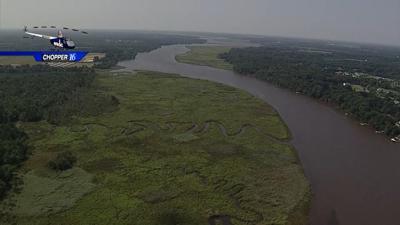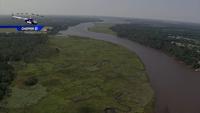The Chesapeake Bay Program has released a final draft for its water quality evaluation.
According to the report, nutrient load reductions have not produced the expected level of improvement in estuary water quality. This shortfall, according to the CBP is particularly pronounced in the Bay's deeper waters and could have significant consequences due to the large nutrient reductions required to achieve the dissolved oxygen criteria in the deep water and deep channel habits.
"Additional funding of existing implementation efforts is unlikely to produce the intended nutrient reduction outcomes," the report says. "Achieving and sustaining substantial nonpoint pollutant reductions will likely require development and adoption of new implementation programs and tools."
The report also says direct evidence of the impact of water quality changes on various classes of living resources is mixed, partly because of the confounding multiple changes occurring and complex ecological interactions, and partly because there have not been substantial systemwide changes in some criteria, like dissolved oxygen. The location and timing of water quality improvements will influence the composition and abundance of living resources. The five habitats, according to the report, demonstrate different patterns and trajectories of attainment of water quality criteria, and attaining the criteria is expected to be most difficult in the deep channel habitat. According to the report, habitat types also differ in their sensitivity to local management actions that can enhance living resource response. For example, actions in shallow waters such as creating living shorelines and improving benthic habitat can greatly increase the living resource response to water quality conditions.
Moving forward, the CBP says it is entering a new era of management.
"The Bay of the future will be different from the Bay of the past because of permanent and ongoing changes in land use, climate change, population growth, and economic development. Refining restoration goals over time should be considered as knowledge evolves about what future conditions are possible, what local communities and the partnership at-large see as priorities, and what is required to attain those possible futures. Uncertainty is inherent in each of these."
To respond effectively to these issues, the CBP says the current adaptive management process for water quality could be enhanced in several ways.
"Decision science offers processes to integrate complex technical analyses with the planning processes used by those with the authority to make choices about goals, programs, and budgets," the report says.
There are tools and processes available to identify and reduce decision-relevant uncertainties. The report says these approaches aim to identify those uncertainties that pose the greatest risk to achieving management objectives, identify how much a given outcome could be improved if a given uncertainty was resolved, and identify the cost of error.
In conclusion, the Chesapeake Bay Program's report indicates decades of efforts to manage nutrient and sediment pollutants have improved water quality conditions in some portions of the bay, but results are mixed. Capitalizing on opportunities to improve the effectiveness of pollution reduction efforts will require adoption of new policies, procedures, and programs and expanded capacities to address uncertainties around the system response and decision-making.




